by Lynn Barendsen
At work, when and how do you consider questions about excellence? Some further questions that might come to mind about excellence at work are:
Do you have time to reflect and consider the quality of your work?
Do you answer to an immediate supervisor, and does their opinion impact your understanding of excellence at work?
Do you supervise others, and do you regularly discuss what is and isn’t quality work with them?
How do you do your “best” work?
Does your current work allow you to make the most of your skills?
What is the relationship between high quality work and “good work”?
At The Good Project, “good work” is about three “Es”: ethics (contributing to the world in a positive way and doing no harm), engagement (meaningful, fulfilling), and excellence (high quality). This blog focuses on excellence: what we mean by this term, how it has evolved since our research began, and particular contexts to take into account when reflecting upon and discussing excellence in today’s climate.
During our original research of the nature of “good work” in the mid 1990s, we identified practitioners to interview via a process of recommendations, based predominantly on excellence. Each time we began to study a new profession (genetics, journalism, medicine or law, for example), we would conduct a series of informant interviews, talking with experts in that field. These “gatekeepers” would help us to identify emerging issues in that particular profession; they also helped us to identify established or emerging leaders. When we asked about leaders in the field, we asked only about excellent, or high quality, work; we didn’t ask for the most ethical leaders, nor did we ask about those who found meaning in their work. In other words, when we first began our research, “excellence” meant expertise: high-achieving, well-known, respected work. We wanted to talk with those who were leaders in their various professions in terms of high quality work (the other two “Es” were identified as a result of the data gathered through conversations with “excellent” workers).
In the decades since this research, our understandings of excellence in work have evolved in multiple ways. Today, we believe that it’s critical to take into account how personal standards for excellence may differ from one another. For example, someone who has been working in a particular field for decades will have developed a level of expertise not possible for a novice; someone raised with wealth and privilege will have a different approach to work than someone struggling with food insecurity and lack of housing. There are many other examples of difference with respect to the factors that impact how individuals approach their work. If we truly want to encourage excellence in work (not to mention ethics, engagement and other elements of good work we have yet to identify), everyone must feel motivated and supported, and we must recognize that what works for some doesn’t work for others. Often, excellence is our individual “best” effort, determined by any number of factors, at a particular moment in time.
Although an individual “best” on any given day can shift, what’s important are the standards to which we hold ourselves. We bring varied notions of excellence to the table based on a number of factors, including cultural and socioeconomic backgrounds, neurological and other differences. That said, there are of course standards of “excellence” that are important to keep in mind. For example, a surgeon’s “personal best” on a given day is not enough if it puts a patient’s life at risk. If she is tired and not able to meet her profession’s standards, perhaps her personal best on that day involves rest and recuperation rather than work in the operating room. Importantly, this is why we also have professional standards that must be met, so that is not just up to individual, personal judgment.
On The Good Project, we have come to believe that the concept of excellence - like the full good work framework - is:
attentive to the particular qualities and behaviors we want to cultivate in ourselves and others;
more than meeting a particular benchmark (like a grade) and is attentive to complexity;
regularly reflected upon for insight and growth;
guided by personal values and is context specific but open to flexibility (e.g., excellence as a nurse looks different than it does for a journalist, a restaurant worker, or a teacher)
An additional important question, especially considering the current mental health crisis: is striving for the “best” necessarily a good thing? As Jennifer Breheny Wallace has highlighted in her bestselling book, Never Enough, optimizing performance has become toxic and dangerous in an achievement culture within a particular subset of the population. (Some solutions to this toxicity are suggested in this interview with the author.) Also crucial to any conversation about excellence is an understanding about difficulty and even, at times, failure: how do individuals respond to obstacles in their work? As a recent article on Failing Well explains, “intelligent” failure is common with innovation, and if learning happens as a result of a failed experience, the net result may in fact be positive.
When we work with high school students, we have had to make clear that we are not insisting that every student be “excellent” every day and in every way. But where and how these lines are drawn are important topics of conversation, for educators, for students, for school communities as a whole and of course, for families.
Some questions we continue to ponder:
Does all work have to be “excellent,” or can it be really good or great? Does this vary by the work carried out? What is the relationship between “perfection” and high quality work? Do you need to be an expert to do excellent work? What is the relationship between competence and high quality work?
How are our expectations of “excellence” connected to the number of people impacted by the work carried out? Is there a difference, for example, in what we expect of a rocket scientist or an architect because the work they do can potentially help or harm a large number of people?
Do we consider the years of training required to do a particular type of work, or the number of years someone has been in a particular position, in our expectations about excellence? In other words, do we expect more in some ways of a lawyer than a school bus driver, or more of a chef who has been in the kitchen for 15 years than one who has been working for 5?
How are our understandings of excellence connected to the responsibilities of a particular type of work?
What are the differences between the process of excellence and the product of the work? Consider, for example, the “journey” towards excellence versus the actual product of “being” excellent. Sometimes failing along the way is a positive process, as it allows for innovation. What are the important distinctions between the process of work and the end result of those efforts?
Below are some resources from The Good Project that you might use to explore excellence:










